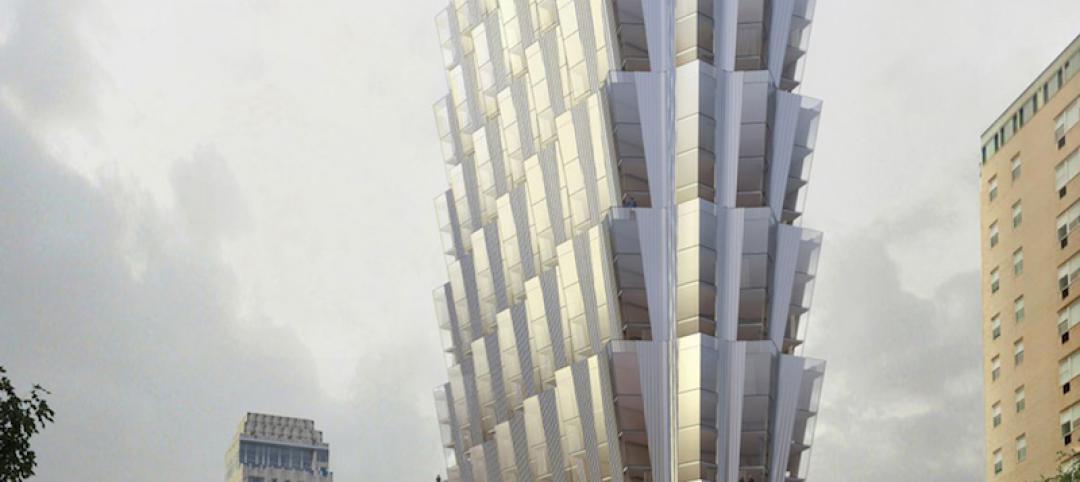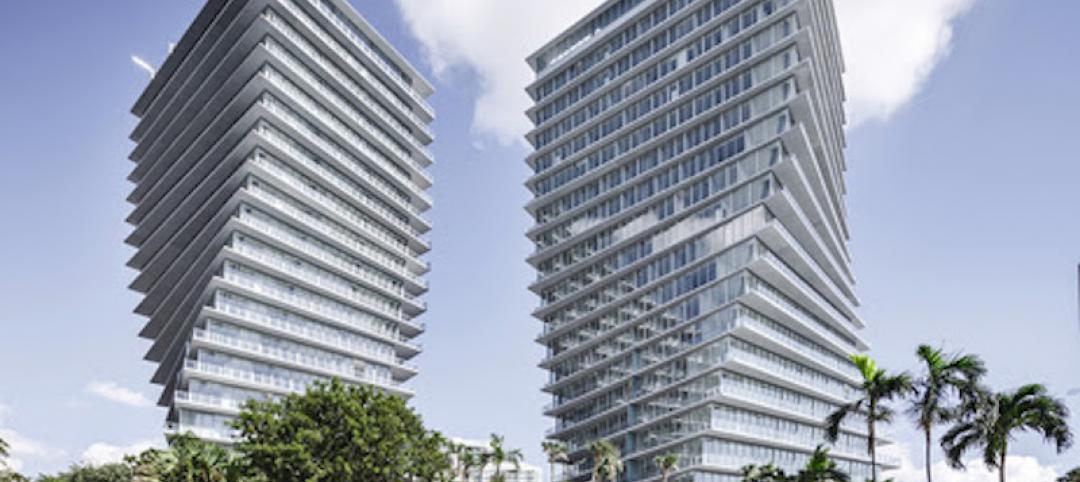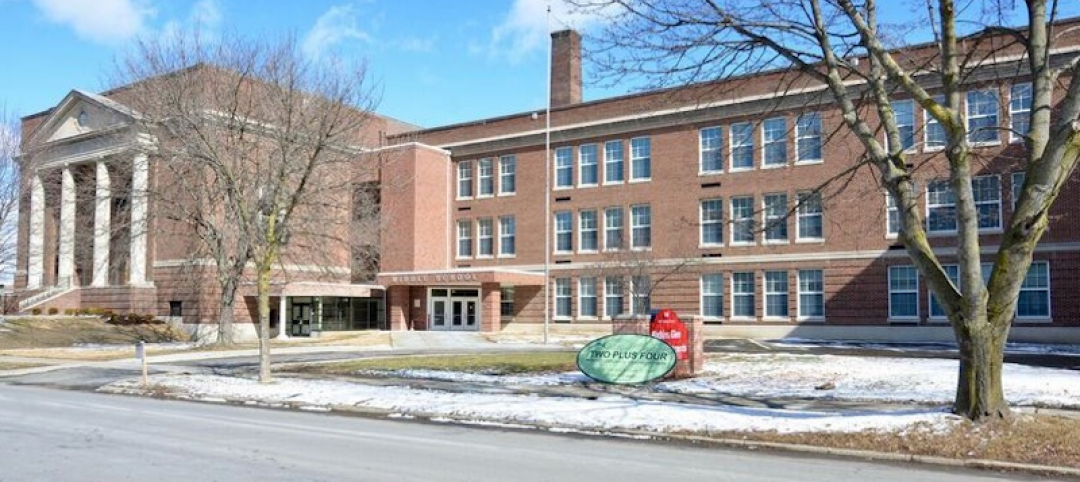A few years ago, the term Internet of Things (IoT) was ubiquitous in smart home technology lexicon. It represented the abundance of connectable devices that residents would potentially be bringing into their apartment homes for generations. Wide-eyed projections seemed unlimited. The industry just needed to find a way to accommodate it all.
Apartment owners, managers, and developers are at once wowed by the exponential growth in connectivity, and also a bit intimidated. The sheer force of corporate marketing and fear of missing out has convinced them that connectivity must be an absolute necessity for any multifamily enterprise hoping to compete with the community down the block.
Henry Pye, Vice President, RealPage shared these facts for the hundreds of developments his team works on each year:
• Two years ago, 5% of new development – luxury properties – had a managed Wi-Fi system and offered smart home tech.
• One year ago, about 35% of development included a managed Wi-Fi system in the rent; 20% of those had smart home technology.
• Right now, about 70% of new development is installing a managed Wi-Fi system; 55% of those have smart rental units.
Apartment developers and technology companies that literally are unlocking these smartphone-based resident-user interfaces for security, utility, and onsite operations continue to innovate. Bulk-managed Wi-Fi systems are leading the way to high-rising trajectory for smart connectivity nstallation.
In this report, we explore some of the considerations for multifamily designer, builders, and developers when choosing the system to install or to add to their properties.
NOTE: Go to “9 smart connectivity systems for multifamily housing communities” to learn about Boingo, Brilliant, Carson Living, CommunityConnect by RealPage, Dwelo, Latch, PointCentral, SmartRent, and Xfinity Communities.
CONNECTIVITY – THE BACKBONE OF THE SMART RENTAL UNIT SYSTEM
The backbone of any smart home technology system is a community-wide high-speed internet access network with ubiquitous Wi-Fi connectivity. New development is embracing bulk-managed Wi-Fi network installations. Historically, market-rate and luxury multifamily communities executed communications service agreements with traditional phone and cable television service providers to deliver and market video and high-speed internet access (HSIA) directly to multifamily residents, says Pye.
Those service providers then executed subscriber agreements directly with residents. Under such arrangements, a community’s principal obligations were to: 1) supply space for service providers' equipment, 2) install a portion of the low-voltage infrastructure, and 3) assist the service providers’ marketing efforts.
“For the most part, the multifamily industry spent the past 20 years not providing HSIA on a bulk basis,” Pye says. “During the past two years, however, the adoption of bulk HSIA by multifamily communities has grown dramatically, and today, bulk HSIA is a topic of discussion for most multifamily communities.”
Several factors are contributing to the growth of bulk HSIA.
The main reason: It’s good for residents – even more so today, as the work-from-home situation brought on by COVID-19 has shown. Residents living in a community with a managed Wi-Fi system get superior service while paying about 50% of retail, Pye says.
For owners, a managed Wi-Fi system can save money by addressing multiple needs. “Technology has evolved to the point that now a single network can support various technology providers, and solutions, presenting a markedly better investment,” Pye says. “A managed HSIA solution with managed Wi-Fi provides the ability to support almost every on-site technology solution available today,” such as access control, cameras, electric vehicle charging ports, package solutions, metering, and fitness systems.
Cellular-assist services via a managed HSIA solution can also be a viable and less costly solution for 4G/5G mobile support. “No one knows precisely how the migration to 5G will affect multifamily,” Pye says. “However, there are many reasons to believe it will be unpleasant. 5G promises revolutionary mobile communications approaching Wi-Fi speeds. It achieves these service levels and speeds via higher-frequency transmissions. Unfortunately, the amplitude of a radio transmission is inversely proportional to how far the signal can reliably travel and how well the signal penetrates objects.
Pye says that energy code requirements like low-energy windows and radiant barriers, as well as building with light-gauge steel, increases the impediments to outside radio frequency. “Mobile communications providers are moving toward a new mobile communications standard that presents even greater challenges for penetrating multifamily buildings,” he says.
Pye says that the first solution many communities consider for cellular augmentation is a Distributed Antenna System (DAS). But 5G DAS doesn’t exists today, and the promise of CBRS (Citizens Broadband Radio Service) is still a couple of years away, Pye says. “Moreover, DAS systems are increasingly expensive to operate because they tie to incoming broadband connections instead of rooftop antennas. Faced with paying for a 4G system with no clear upgrade path, Wi-Fi cellular assist often is a less costly solution.”
A managed HSIA network provides a superior and less risky smart community experience. “It is wise for communities to protect their investment by avoiding proprietary equipment and pursuing solutions with multiple exit strategies,” Pye says. “A managed HSIA solution combined with Wi-Fi-enabled edge devices, such as thermostats, sensors, and lighting systems, reduces the potential impact of proprietary equipment while offering increased options to adjust or change.”
Managed HSIA solutions can provide a Wi-Fi solution far superior to anything residents can obtain on their own. “Resident-provided Wi-Fi in multifamily buildings operates very poorly,” Pye says. “The primary challenge for wireless HSIA is not the quality of the resident's Wi-Fi equipment, but rather the lack of a system to manage the wireless access point within a resident unit relative to those that surround the unit in three dimensions.”
Residents’ wireless access points continuously interferes with each other. In Pye’s view, the most important reason to use wireless equipment from a quality vendor is the ability of a managed solution to mitigate the adverse effects of placing dozens of wireless access points in proximity. That results in better Internet access for residents while giving the property management team opportunities to reduce expenses and add revenue streams, he says.
“A large percentage of managed HSIA solutions previously deployed to market-rate or luxury multifamily communities proved unsuccessful,” says Pye, largely due to the high costs for backbone bandwidth. “Communities settled for a speed/price combination that was not as competitive as the best offers from traditional phone and cable television service providers,” he says.
That has changed in the last 24 to 36 months, he says. The lower cost of bringing significant backbone bandwidth to individual communities has greatly improved the managed HSIA financial model. In major metropolitan areas, most communities with 200 or more units that pay for network equipment up front can offer a gigabit HSIA solution to each unit for $20/unit/month or less. By comparison, the retail options from traditional phone and cable television service providers routinely command $70-100/month for “up to” 1 gigabit HSIA. “The economics have flipped, allowing communities to offer HSIA services that meet or exceed the combination of speed and pricing available in the consumer marketplace,” says Pye.
“Bulk-managed HSIA now represents a viable option to consider for many multifamily communities and should be considered before moving forward with any DAS system or IoT deployment,” Pye says.
3 COMMON SMART HOME MISTAKES TO AVOID
Adrian Adriano, Vice President of Strategic Initiatives, Xfinity Communities, points to three common mistakes that multifamily designers and developers can make when strategizing for smart home technology:
1) Not conducting market research to determine their target audience and what this market cares about when it comes to smart home tech.
2) Neglecting the training that will be required for property managers and maintenance staff. They will be the ones managing these devices and the residents’ needs day-to-day, so they will need to know how to use this technology to solve any problems that come up.
3) Forgetting how these smart technologies will put an increased strain on the network. Properties will need to partner with a service provider to develop solutions that best handle the bandwidth and connectivity challenges of a smart facility.
Herb Sharpe, Vice President Sales, Business Development Multifamily at Boingo Wireless, says, “Owners should plan for property-wide wireless coverage with technologies that meet 5G specifications. Unlike the traditional approach to wireless, which places residents and owners/managers at the mercy of cable companies or Internet service providers, bulk networks serve as a property’s central operational hub.”
Residents benefit from instant-on, wall-to-wall coverage, and owners/managers have access to real-time usage insights, leading to greater operational efficiency and resident satisfaction, he says.
Sharpe says he believes that bulk-managed Wi-Fi is the future for multifamily connectivity.
“This Wi-Fi approach integrates the necessary infrastructure to power both the resident connectivity experience and IoT devices seamlessly,” he says. “When you have a property with 300+ units blasting Wi-Fi on the same channel, it gets complicated. You need one centralized network that designs the experience for everyone — the resident, the owner, and the property staff.
“By having a managed Wi-Fi network, owners can design the experience they want, while tracking it in real-time with powerful analytic tools, while also enabling them to adapt to a fast-moving world and tech industry.”
PROTOCOLS – THE RUBRIC OF SMART CONNECTIVITY TECHNOLOGY
For smart connectivity technology to work, it must use the most optimal protocols. The National Multifamily Housing Council cites four IoT protocols – Z-Wave, Zigbee, Bluetooth and Insteon – from among the more than a dozen now available, including Wi-Fi, LoRa, and cellular.
Donald Davidoff and Dom Beveridge of apartment industry consulting firm D2 Demand Solutions, have written that Z-Wave and Zigbee are standard protocols, with Z-Wave emerging as the de facto industry standard for smart home devices. Z-Wave helps to counter the growing problem of “app fatigue,” they note.
Operators do not want to tout smart home technology only to have it result in a poor user experience. For some residents, all this “convenience” can border on becoming a nuisance with so many apps, passwords, securities, and platforms/hubs to account for.
Z-Wave protocols help safeguard this problem by stipulating that residents can add as many devices as they want in their apartments, but they must all be controlled through a single app and the Z-Wave hub.
The efficiency of one app and hub controlling all the smart devices in a unit can be appealing. Imagine a single button that says “I’m home” and thus turns on the lights, changes the thermostat, opens the drapes and unlocks the door. This level of coordination would not be attainable with multiple different apps controlling the devices.
SECURITY ASPECTS OF SMART CONNECTIVITY ARCHITECTURE
Security is also an important consideration in the selection of smart community architecture. “The implementation of individual hubs restricts security access to individual units, as access to each apartment’s smart devices is through its own hub,” Beveridge says. “Alternative configurations aggregate multiple units into hubs, or worse, control access across an entire property network.” In the event of a breach, many apartments could be compromised.
The individual hub architecture reduces the problems inherent in aggregating control by establishing security at the lowest possible level – the individual unit. In this scenario, a hacker would need to hack two levels to exploit a vulnerability: first, the cellular or Wi-Fi network, to gain control of the individual unit’s hub; then, the Z-Wave protocol, to gain access to the hub itself. In this way, the individual hub architecture enables access, while adding a second layer of security to protect it.
Pye recommends a community-wide network with enterprise-grade and security-tested hubs for optimized cost savings and security. With such a system, individual residents cannot purposefully or accidentally disconnect or move their system and 24/7 monitoring means increased operating efficiencies for management.
Pye also recommends enterprise-grade technology with a hub that leverages the strengths of multiple protocols, including Z-Wave, Zigbee, Bluetooth Low Energy, and LoRa, to optimize the opportunity for owners to choose products for their asset class and goals. For example, some Class A operators may prefer the brand recognition available with Google Nest thermostats or Lutron and therefore need a multi-protocol solution to meet their demographic needs. On the other hand, asset classes focused on ROI by optimizing efficiencies may prefer a technology like LoRa, which enables smart devices to communicate for miles without any building-run wires.
Pye says with regards to security, an enterprise-grade system will minimally provide access to advanced security audits (SOC 2 Type II for Security, Confidentiality and Availability), static code reviews, and penetration testing results, as well as data strategy for privatization, anonymization, compartmentalization, and GDPR/CCPA compliance.
He adds that owners should ask how many tools are in the API (application programming interface) toolkit: Does the vendor have one thermostat or a choice of several, such as Honeywell Nest, ecobee, or Zen? The API’s depth also must be considered. For example, does the IoT partner’s API work with your Property Management System to connect not only to leasing, but also to maintenance, utility management, payments, and messaging solutions?
HOW ONE OWNER UPGRADED ITS SMART OPERATIONS HUB
For multifamily operators, smart home technology’s rise began with improved locks and entrance systems as well as the prospect of energy savings. Another plus was that managing such functions remotely through a community-wide hub can save time for their on-site teams, especially their maintenance staffs.
In 2019, apartment REIT UDR installed smart building technology at 15 properties in Los Angeles, Seattle, and metro Washington, D.C., with the goal of reducing common area HVAC expenses at these properties by 10–15%, a year. Its smart building technology provides real-time whole-building energy consumption and allowed it to implement energy protocols to operate its buildings more efficiently.
The technology – smart meters, sensors, thermostats, and other wireless equipment – enabled UDR to actively set heating/cooling schedules and temperature ranges from a centralized location. Alert notifications are easily monitored through secure authorized access via a mobile device or computer. The technology can also identify potential water leaks in its properties and alert property management staff. UDR has since expanded this technology to an additional 20 properties.
“When operators can manage vacant units and control access to both buildings and individual units, they can remove considerable friction from the day-today lives of maintenance and leasing teams,” Davidoff says. “There is no longer any need to travel around the property to retrieve keys.”
For owners, investing in leak-detection technology and being able to monitor heat pumps for deficiencies may get them more years’ use of the heat pumps, thereby saving on replacement costs.
Related Stories
Multifamily Housing | Dec 15, 2016
Multifamily tower in St. Louis uses stacked design to make every apartment a corner unit
Designed by Studio Gang, the building’s stacked tiers will each comprise four floors and fan outwards as they rise up.
Multifamily Housing | Dec 12, 2016
BIG’s first residential condominium in the U.S. completed in Miami
Two 20-story twisting towers comprise 98 units on a three-acre site near Biscayne Bay.
Multifamily Housing | Dec 1, 2016
One of Canada’s largest media companies dives into real estate development
Rogers moves forward on M City, a multi-building, multi-year project in a Toronto suburb.
Multifamily Housing | Nov 28, 2016
Axiometrics predicts apartment deliveries will peak by mid 2017
New York is projected to lead the nation next year, thanks to construction delays in 2016
Sponsored | Multifamily Housing | Nov 11, 2016
Value engineering brings Santa Barbara apartments back on track
When framing estimates for a new apartment complex in Rialto, California, came in too high, a savvy developer decided to have the project value engineered. A switch to glulam and wood-framed shear walls got the project back in the black.
Adaptive Reuse | Nov 9, 2016
Middle school transformed into affordable housing for seniors
The project received $3.8 million in public financing in exchange for constructing units for residents earning less than 60 percent of the area’s median income.
Multifamily Housing | Oct 28, 2016
Aston Martin is making a foray into real estate in Miami
The British automaker will partner with G and G Business Developments on the waterfront project.
Multifamily Housing | Oct 25, 2016
The Beacon will become the most sustainable residential tower in the world
Lumiere Developments says the building will generate enough energy to offer residents ‘Free Energy For Life.’
High-rise Construction | Sep 8, 2016
Construction on the tallest residential tower in western Europe could start early next year
China’s Greenland Group is the developer of four of the world’s 10 largest skyscrapers
High-rise Construction | Sep 6, 2016
Peddle Thorp Architects' solar-powered Melbourne high-rise looks to go off the grid
The skyscraper would be the first in Australia to incorporate solar cells in its façade.















